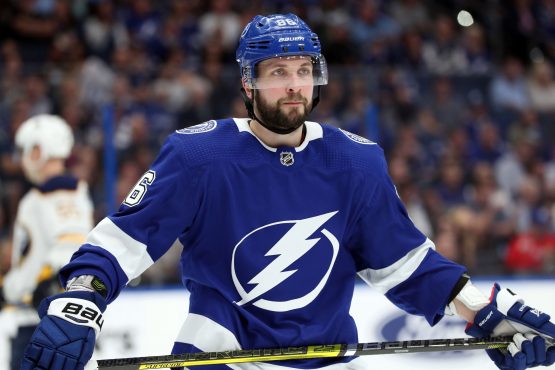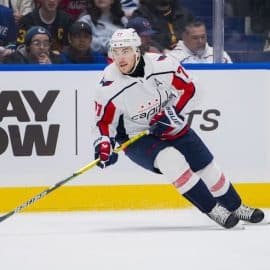In a corresponding pair of moves that is designed to alter the blue line, the Senators placed Braydon Coburn on waivers and announced that prospect Erik Brannstrom would be promoted from their AHL group to the taxi squad.
Presumably, once Coburn clears waivers tomorrow at noon and is cleared to join the taxi squad, the Senators can formally proceed to move Brannstrom to their roster.
Had the Senators not been stuck in the midst of a six-game Western road trip, it would probably be safe to assume that this move would have been made sooner.
Management sought out character, physicality and size during the offseason believing that these components would make the Senators harder to play against and insulate their youth from unnecessary abuse. It became quite clear quickly that if a player could not skate, recover pucks in battles or transition the puck efficiently, that player would not be particularly difficult to play against.
Through eight games, the Senators simply struggled whenever Coburn was on the ice.
|
% |
|
|
CF% |
43.46 |
|
SF% |
45.05 |
| SCF% |
37.23 |
|
GF% |
33.33 |
| xGF% |
43.76 |
The opposition had their way routinely outshooting (CF% and SF%), outchancing (SCF%) and outscoring (GF%) the Senators at five-on-five with Coburn on the ice. Even though some better on-ice luck and some saves from the goaltenders would have helped Coburn’s numbers, the opposition still generated a higher share of the expected goals (xGF%).
In particular, Coburn’s pairing with Josh Brown was dreadful. Of all the NHL pairings this season that have played 40 or more five-on-five minutes together according to NaturalStatTrick.com, Coburn and Brown had the worst shot-share percentage in the league. When they were on the ice, the opposition generated 71.6 percent of all shots and 63.2 percent of all the expected goals.
They are horrendous metrics that are only exacerbated by the fact that the Mike Reilly and Erik Gudbranson may be even worse.
Hopefully the introduction of Erik Brannstrom to the lineup will help curb some of the unbalanced shot shares that have negatively impacted Ottawa’s possession game.
Brannstrom unfortunately was never able to push hard for a spot in training camp because in his travels to Ottawa for the start of the NHL season, Brannstrom came into contact with someone who tested positive for Covid. It was a disappointing turn of events for the player. Brannstrom was trying to build off some good play in the AHL last season where he was nearly a point-per-game player last season. Brannstrom was loaned to the SCL Tigers of the Swiss National League where he scored two goals and added six assists in 10 games before being recalled to Ottawa.
We will never know where Brannstrom would have slotted in on the depth had he participated, but earlier this week, TSN 1200’s Shawn Simpson reported that the Senators’ head coach was not high on Brannstrom’s ability.
In regards to Brannstrom, I'm told Smith just isn't a fan. I have to admit I do agree with the coach, but l would still give him some reps. With all the pressure on Dorion, having nothing to show for Stone means what? So it's better to hide, avoid, and pretend?
— Shawn Simpson (@TSNSimmer) February 1, 2021
Whether that is true, it does not really matter now. The Senators are starting to cut bait with redundant veteran players and Erik Brannstrom will simply be the first of many to be promoted and play.
Where Brannstrom will slot in will be intriguing to watch. It is no secret that the Senators, from the coaching staff to management, prefer to have Brannstrom play his natural left side. With Coburn’s departure, that creates a void on the left side, so it stands to reason that is where Brannstrom will get his first opportunity.
The Senators already have a number of puck-moving defencemen on the left side however, with the archetypal defensive defencemen occupying spots on the right side. Brannstrom prefers to play his off-side and would bring some elements that the right side currently lacks, so his usage and playing time will be interesting to monitor going forward.
Most of all, it will be intriguing to watch how Brannstrom carries himself in these first few games. When the young defenceman started last season with the Senators, too often it looked like he was debilitated in the sense that he was afraid to make mistakes. Rather than use his skill and dynamic skating to create plays, Brannstrom was simply trying to survive and mitigate his mistakes by playing too conservatively.
What version of Erik Brannstrom are we going to see this time around?
I can’t wait to find out.
Add The Sports Daily to your Google News Feed!







